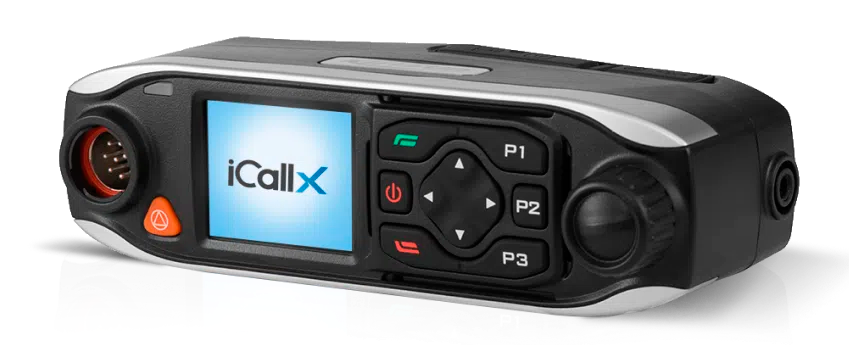PTToC in Public Safety Communication
Discover the transformative impact of PTToC in Public Safety Communication. Ideal for public safety professionals and tech enthusiasts alike.
Public safety communication has always been a critical aspect of emergency response and law enforcement. Traditionally, this domain relied on land mobile radio (LMR) systems that provided reliable and instant communication among public safety personnel. However, with rapid advancements in mobile technology, a new form of communication has emerged, known as Push-to-Talk over Cellular (PTToC).
PTToC leverages cellular networks to provide instant, one-to-one, or one-to-many communication. It combines the convenience of traditional push-to-talk (PTT) functionality with the extensive coverage and capacity of cellular networks, offering a more versatile and scalable communication solution.
PTToC leverages cellular networks to provide instant, one-to-one, or one-to-many communication. It combines the convenience of traditional push-to-talk (PTT) functionality with the extensive coverage and capacity of cellular networks, offering a more versatile and scalable communication solution.
Evolution of PTToC in Public Safety Communication
The evolution of PTToC in public safety communication is a testament to the ever-changing landscape of technology and its application in critical sectors.
Initially, PTToC was limited by network reliability and coverage. However, with the advent of 4G LTE and now 5G networks, PTToC has become a viable and robust alternative to traditional LMR systems.
Early implementations of PTToC were often plagued by latency issues and inconsistent coverage. These limitations hindered its adoption in mission-critical scenarios where reliability, speed, and clarity are paramount. Even so, advancements in network infrastructure and the proliferation of smartphones have significantly improved PTToC technology.
Today, PTToC applications are designed to integrate seamlessly with existing public safety communication systems, offering interoperability and enhanced functionality.
Initially, PTToC was limited by network reliability and coverage. However, with the advent of 4G LTE and now 5G networks, PTToC has become a viable and robust alternative to traditional LMR systems.
Early implementations of PTToC were often plagued by latency issues and inconsistent coverage. These limitations hindered its adoption in mission-critical scenarios where reliability, speed, and clarity are paramount. Even so, advancements in network infrastructure and the proliferation of smartphones have significantly improved PTToC technology.
Today, PTToC applications are designed to integrate seamlessly with existing public safety communication systems, offering interoperability and enhanced functionality.
M50 3G 4G PTToC Mobile Radio

Benefits of PTToC for Public Safety Professionals
Today’s small business owners often manage remote teams, engage with clients globally, and require quick, reliable communication channels. PTToC offers several advantages that make it particularly relevant:
- Enhanced Coverage and Connectivity: One of the primary benefits of PTToC in public safety is the extensive coverage provided by cellular networks. It leverages the widespread availability of cellular towers and infrastructure, this ensures that public safety personnel can maintain communication even in remote or challenging areas.
- Cost-Effectiveness: Implementing and maintaining traditional LMR systems can be costly. PTToC offers a cost-effective alternative by utilizing existing cellular networks, reducing the need for dedicated infrastructure.
- Interoperability: PTToC applications are designed to work alongside existing LMR systems, facilitating seamless communication between different agencies and departments. This ensures that all public safety personnel, regardless of their location or device, can communicate effectively during emergencies.
- Advanced Features and Functionality: PTToC applications offer a range of advanced features that enhance the overall communication experience. These include real-time location tracking, multimedia messaging, and the ability to integrate with other critical systems such as Computer-Aided Dispatch (CAD) and Incident Management Systems (IMS).
- Scalability: PTToC provides a scalable solution that can easily accommodate new users and devices. This flexibility ensures that public safety agencies can adapt to changing requirements without the need for significant infrastructure changes or investments.
Future for PTToC Technology
The future of PTToC in public safety communication looks promising, with several trends and innovations set to shape the landscape further:
- Integration with 5G Networks: The rollout of 5G networks promises to revolutionize PTToC by offering even lower latency, higher data speeds, and greater capacity. This will enhance the real-time communication capabilities of PTToC, making it more reliable and efficient for public safety applications.
- Artificial Intelligence and Machine Learning: Artificial Intelligence (AI) and Machine Learning (ML) are poised to play a significant role in the future of PTToC. These technologies can be used to analyze communication patterns, predict potential issues, and provide intelligent recommendations for resource allocation and incident management.
- Enhanced Security Measures: As PTToC becomes more integrated into public safety operations, ensuring the security and privacy of communications will be paramount. Future innovations will focus on implementing robust encryption protocols, secure access controls, and advanced threat detection mechanisms to safeguard sensitive information.
Conclusion - The Impact of PTToC on Public Safety and Technology Enthusiasts
PTToC in public safety communication is a solution that improves coverage, connectivity, and functionality for public safety professionals. As the technology continues to evolve, driven by advancements in cellular networks, AI, and AR, PTToC is set to play an increasingly important role in ensuring the safety and security of our communities.
By implementing PTToC, public safety agencies can not only improve their operational efficiency but also ensure that they are better prepared to respond to emergencies and keep our communities safe. As technology enthusiasts, we have the exciting opportunity to witness and contribute to this evolution.
Embrace the future of public safety communication with PTToC and be a part of the innovation that drives efficiency, effectiveness, and enhanced situational awareness in critical scenarios.
By implementing PTToC, public safety agencies can not only improve their operational efficiency but also ensure that they are better prepared to respond to emergencies and keep our communities safe. As technology enthusiasts, we have the exciting opportunity to witness and contribute to this evolution.
Embrace the future of public safety communication with PTToC and be a part of the innovation that drives efficiency, effectiveness, and enhanced situational awareness in critical scenarios.
We advise you on what your company needs

